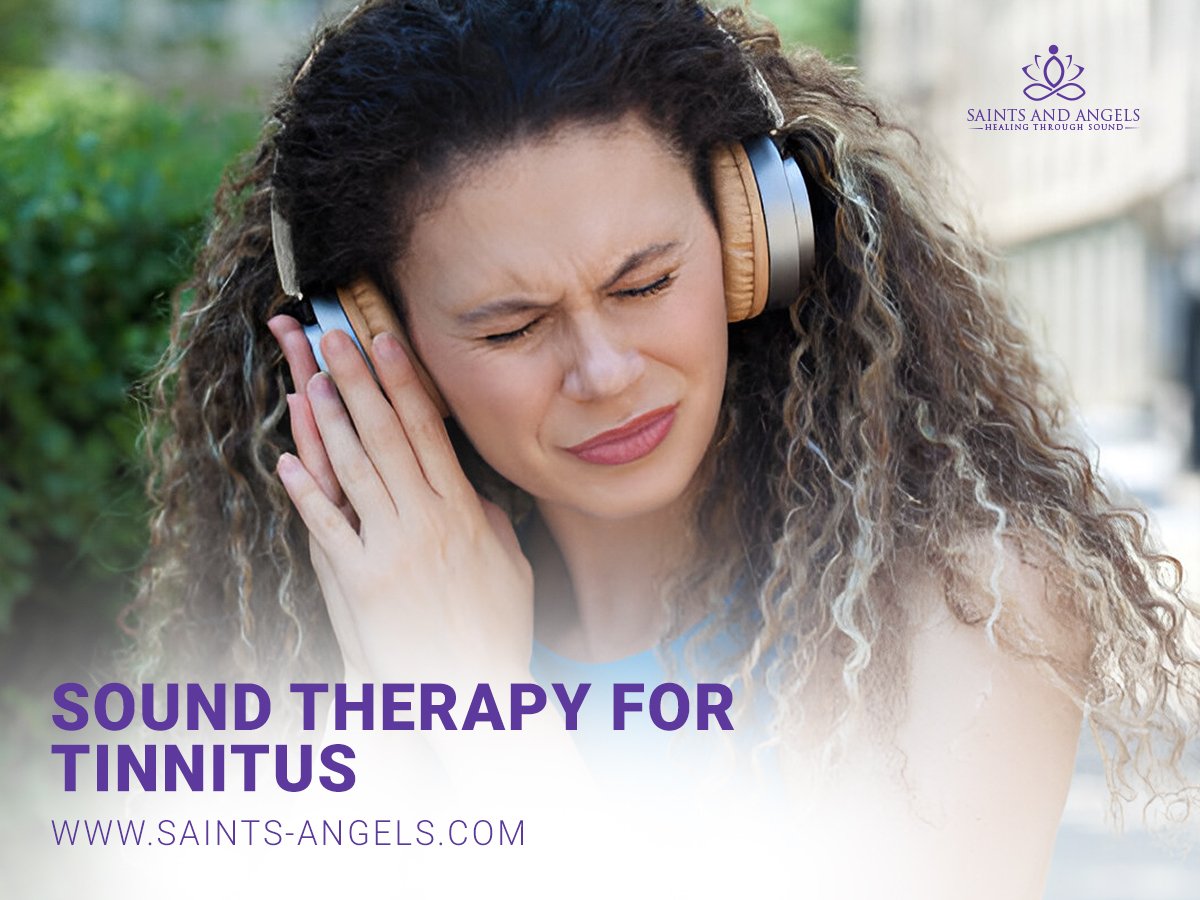The ancient practice of sound healing, utilizing the tranquil power of sound bath sessions, has been a cornerstone of alternative medicine for millennia [1]. By engaging in meditation and relaxation through music therapy, we harness specific frequencies and instruments, from singing bowls to crystal bowls, to align and rejuvenate our body, mind, and spirit [1].
As we seek harmony within, sound healing offers a unique experience for saints and angels in cities like Chicago, where one can easily find a ‘sound bath near me’ to explore the profound health benefits of this practice [1]. In our journey through this article, we will unravel how these sonic vibrations interact with our energy fields and chakras, paving the way for emotional release and a tranquil state of being [1].
The Essence of Sound Bath
Sound healing is a practice rich in history and diversity, with roots stretching back over 40,000 years across various cultures. It’s a form of therapy that uses the power of sound to foster healing on multiple levels of our being [2]. Here’s a closer look at the essence of this ancient practice:
- Multidimensional Well-being: At its core, sound healing is about the therapeutic application of sound frequencies to the body and mind. By combining music, sound, and healing instruments, it aims to trigger a relaxation response that helps counteract the effects of chronic stress and promote balance across our entire system [3].
- Instruments and Techniques: A variety of instruments are utilized in sound healing, including Tibetan and crystal singing bowls, gongs, drums, and tuning forks. These instruments can be played both on and off the body, and may also involve vocal sounds and tones to enhance the healing effect. The rich array of instruments reflects the extensive history of sound as a healing tool [3].
- Physical and Mental Health Benefits: The applications of sound healing are broad, addressing conditions such as anxiety, PTSD, dementia, and more. It can also have profound effects on our physical well-being, contributing to lower stress levels, reduced blood pressure, and improved sleep quality, among other benefits [3].
- Quantum Healing: Sound healing operates on the principle that everything, including each cell in our body, is energy vibrating at different frequencies. When our natural frequencies are disrupted, it can lead to physical or emotional imbalances. Sound healing instruments produce vibrations that match the body’s frequencies, promoting a return to harmony [4].
- Entrainment and Cymatics: The process of entrainment involves the synchronization of our body’s vibrations with the sound frequencies, effectively tuning our cells back to their optimal state. Cymatics, the study of visible sound and vibration, shows us the physical patterns that sound frequencies can create, offering a glimpse into how these vibrations interact with the body [4].
- Holistic Practice: Sound healing is more than just a meditative experience; it’s a holistic practice that engages the parasympathetic nervous system. This activation helps slow down our bodily functions, allowing us to enter a deeply relaxed state where healing can occur. The practice is known for its ability to make individuals feel more rested, less anxious, and more resilient against stress and trauma [7].
- Conductivity and Vibroacoustic Therapy: Given that humans are 75% water, our bodies are natural conductors for sound vibrations. Sound healing, or vibroacoustic therapy, uses these vibrations within the human hearing range to promote relaxation and pain relief. This can be particularly beneficial for improving sleep and aiding the body’s recovery and healing processes [6].
By integrating the ancient practice of sound healing into our modern lives, we open ourselves to a world of healing possibilities. Whether through attending a sound bath events in Chicago session or incorporating sound therapy into our personal wellness routines, we embrace a time-honored method of attaining deeper relaxation and well-being [5][8].
Scientific Basis of Sound Healing
Modern science has begun to validate what ancient traditions have always revered—the profound impact of sound vibrations on the human body and mind. These sonic frequencies are not just aural experiences but can interact with our very cells to encourage healing and affect our brainwave frequencies, which has been supported by a variety of scientific studies:
- Cellular Interaction: Sound vibrations have the potential to resonate with our body’s cells, promoting healing processes. This interaction is evidenced by studies where tuning forks relieved muscle and bone pain and singing bowl meditations improved circulation and immune system strength [9].
- Brainwave Influence: By slowing down our brain waves, sound healing can induce states of deep relaxation. This effect may help manage a range of physical and mental health conditions, as a relaxed state is conducive to healing and recovery [5].
- Internal System Impact: There’s a cranial nerve connecting the eardrum to every organ in our body, suggesting that sounds can have extensive effects on our internal systems. This connection could explain why sound healing influences so much more than just our mood—it can resonate throughout our entire being [2].
Moreover, contemporary medical technologies like ultrasound and infrasound are utilized for both diagnostic and therapeutic purposes, demonstrating the medical community’s acknowledgment of sound’s potential: - Medical Applications: Ultrasound is commonly known for its use in imaging, but it also has therapeutic applications, such as breaking down kidney stones. Infrasound, meanwhile, has been shown to aid in fracture healing and minimize postoperative adhesion formation in animal studies [2].
- Disease Detection: The vibrational movements of cell walls have implications for early disease detection, with research suggesting potential in identifying conditions like cancer and malaria [2].
Lastly, the principle that all matter, including our body’s cells, vibrates at specific frequencies, is central to understanding the fundamental mechanism of sound healing: - Restorative Frequencies: Sound healing aims to restore disharmonious structures to their natural states by clearing channels within cells and aligning them with their optimal frequencies [2].
- Instrumental Evidence: Traditional sound healing instruments, such as gongs and didgeridoos, have been shown to have positive effects on health, including decreased heart rate and anxiety, as well as improved management of conditions like asthma and fibromyalgia [2].
In essence, the scientific basis of sound healing is rooted in the physical properties of sound and its interaction with the human body. While the exact mechanisms remain a subject of ongoing research and discovery, the evidence thus far points to a promising integration of ancient wisdom with modern scientific understanding [9][10].
Instruments and Techniques Used in Sound Healing
In the realm of sound healing, the instruments and techniques are as varied as the benefits they bestow. Here’s a glimpse into the tools and methods that facilitate this transformative experience:
- Sound Baths: Picture a room filled with the resonant tones of gongs, Tibetan singing bowls, and temple bells. During a sound Healing service, we’re enveloped in these soothing sounds, allowing the vibrations to wash over us, much like a meditative sonic shower [1].
- Guided Sound Meditations: Through the guidance of a skilled musician, we’re led on a journey of visualization, with the soundscape sculpted by instruments specifically chosen to deepen the meditative state and enhance our focus and imagery [1].
- Chanting and Kirtan: The collective energy of a group chanting mantras can be powerful. It fosters mindfulness and compassion, as each voice contributes to a tapestry of sound that promotes concentration and a sense of unity [1].
When it comes to the instruments themselves, the diversity is astounding, each with its unique frequency and healing properties: - Tibetan Singing Bowls: These are not just instruments but vessels of history, made from metals that represent various planetary energies and capable of producing rich, harmonic sounds for both personal reflection and group healing [14].
- Crystal Singing Bowls: Crafted from pure quartz, these bowls emit pristine tones that resonate with our chakras, making them ideal for sound baths that seek to align and balance our energy centers [14].
- Gongs: Their cosmic tones are not just heard but felt, as they reverberate through the space, clearing negativity and fostering emotional release [14].
- Tuning Forks: Precision is key with tuning forks, as they’re used to target specific points on the body, akin to acupuncture but with vibrations instead of needles, unlocking energy blockages and promoting a sense of well-being [14].
The array of instruments extends further, each with a role to play in our healing: - Drums and Percussion: From Shamanic drums that tap into ancient rhythms to ocean drums that mimic the soothing sounds of waves, these instruments connect us to the earth and its natural cadences [14].
- Wind Instruments: The breathy tones of the Native American flute or the deep drone of the didgeridoo transport us to different states of consciousness, facilitating deep relaxation and connection to ancient traditions [14].
- Stringed Instruments: The monochord’s strings vibrate with a hypnotic hum, while the crystal harp’s clear notes ring out, creating an auditory space for healing and contemplation [14].
In our personal sound healing practices or during group sessions, these instruments serve as conduits for the therapeutic vibrations that promote relaxation, stress relief, and a harmonious balance within our bodies and minds [15][16][17][18]. Whether we’re drawn to the gentle melody of a kalimba or the profound resonance of a gong, the world of sound healing offers a rich tapestry of tools to explore on our journey toward wellness.
Health Benefits of Sound Healing
Sound healing is a practice that we’re discovering has a multitude of health benefits, both physical and mental. Here’s a breakdown of the positive impacts that sound healing can have on our well-being:
Physical Health Improvements:
- Experience the tranquility akin to a spa day, as sound therapy restores balance and promotes deep relaxation [19].
- Enjoy physical relief as sound healing can lead to reduced chronic pain and lower blood pressure, contributing to your overall heart health [19].
- Notice improvements in your body’s internal functions, with sound healing contributing to lower cholesterol levels and a decreased risk of heart disease [19].
- Sleep better and feel more rested, as one of the key benefits of sound healing is improved sleep quality [19].
Mental and Emotional Health Enhancements:
- Feel the release of blocked energy as sound healing opens, clears, and balances your chakras, leaving you feeling refreshed and balanced [19].
- Reduce stress, anxiety, and depression, and restore mental balance and clarity for enhanced well-being, peace, and enjoyment [19].
- Sound meditation, a focused awareness practice, can improve mood, alleviate stress, and even relieve physical pain [19].
Therapeutic Benefits for Various Conditions:
- Sound healing therapy can be a supportive treatment for a range of mental, emotional, and physical ailments, including depression, anxiety disorders, PTSD, dementia, autism spectrum disorders, learning difficulties, behavioral and psychiatric disorders, sleep disorders, aches and pains, and even some cancers [11][9].
- Participants in sound therapy sessions have reported various health improvements, such as better joint movement, reduced muscle pain, the disappearance of kidney stones, decreased size of ovarian cysts, and an enhanced positive outlook on life [12].
In addition to these benefits, research has demonstrated that music therapy can influence vital signs and physiological processes, affecting blood pressure, heart rate, respiration, and even immune and endocrine functions [12]. Sound baths, specifically, are designed to be deeply relaxing and meditative, helping us to let go of tension and improve symptoms of depression [20]. And it’s not just about listening—creating music has its therapeutic benefits too, decreasing burnout and improving mood and productivity [2].
As we continue to explore and understand the powerful effects of sound healing and soundbath, we can integrate these practices into our health and wellness routines to tap into their transformative potential. Whether it’s through attending sound baths or engaging in sound meditation, the journey towards healing and balance is enriched by the harmonious blend of ancient wisdom and modern science.
How to Experience Sound Healing
When we decide to embark on the sound healing journey, we have several options to consider. Here’s how we can immerse ourselves in the therapeutic world of sound:
Preparing for Your Sound Healing Session
- Commitment: Approach your session with an open heart and mind, ready to receive the full benefits of sound healing [21].
- Physical Preparation: Eat lightly before your session to avoid discomfort and dress in warm, comfortable clothing to enhance your relaxation [21].
- Mental Preparation: Set a clear intention for what you hope to achieve or experience during the session [21].
During the Session
- 1-to-1 Sessions: Opt for a personalized experience with a trained practitioner, where you can be seated or lying down to fully absorb the sounds from healing instruments [13][3].
- Group Sound Baths: Join a community experience where you lie down and let the collective vibrations of gongs, bowls, and other instruments envelop you in a sound bath [20].
- Embracing the Experience: Keep an open mind throughout the session, accepting all sounds as part of the healing process and allowing the vibrations to flow through you [21].
After the Session
- Integration: Post-session, take time to ground yourself and reflect on the experience, staying away from technology to let the benefits sink in [21].
- Continued Effects: Be mindful of the ongoing impact of the session on your body and spirit, and practice grounding techniques to help integrate the experience into your daily life [21].
Sessions typically last up to an hour, and it’s important to ensure that you’re comfortable throughout. To practice sound healing safely, consider these tips: - Explore different types of sessions to find what resonates with you.
- Consult a healthcare provider if you have any concerns, especially if you’re dealing with specific health issues [5].
- Seek a qualified practitioner to guide your experience and ensure a safe environment [5].
By following these steps, we can embrace the healing power of sound in a way that is both safe and comfortable, allowing us to tap into our inner harmony and balance.
FAQs
- What is the mechanism behind sound bath healing?
Sound bath healing induces a deeper state of consciousness by allowing individuals to disconnect from external stimuli and focus inward. The primary aim is to foster profound relaxation and to facilitate a journey of self-inquiry and self-discovery.
2. Does sound healing have a scientific basis?
Yes, scientific research supports the efficacy of sound healing. For example, a 2016 study in the Journal of Evidence-Based Integrative Medicine demonstrated that participants experienced reductions in tension, anger, fatigue, and depressed mood after an hour of sound therapy.
3. Have sound baths been scientifically validated? Scientific studies have shown that sound baths can positively influence mental health and alleviate physical pain. Although more research is necessary to fully understand their benefits, existing studies have reported promising outcomes.
References
[1] – https://www.yogabasics.com/connect/yoga-blog/sound-healing/ https://www.yogabasics.com/connect/yoga-blog/sound-healing/
[2] – https://www.delamora.life/blog/science-research-on-sound-for-healing https://www.delamora.life/blog/science-research-on-sound-for-healing
[3] – https://www.academyofsoundhealing.com/what-is-sound-healing https://www.academyofsoundhealing.com/what-is-sound-healing
[4] – https://www.sensoryland.com/blog1/what-is-sound-healing https://www.sensoryland.com/blog1/what-is-sound-healing
[5] – https://www.verywellmind.com/sound-healing-for-self-care-8384146 https://www.verywellmind.com/sound-healing-for-self-care-8384146
[6] – https://www.designthyself.com/blog/i-tried-sound-healing-and-this-is-what-i-learnt https://www.designthyself.com/blog/i-tried-sound-healing-and-this-is-what-i-learnt
[7] – https://www.harpersbazaar.com/uk/beauty/mind-body/a42445135/sound-healing/ https://www.harpersbazaar.com/uk/beauty/mind-body/a42445135/sound-healing/
[8] – https://www.niyamayogashala.com/sound-healing https://www.niyamayogashala.com/sound-healing
[9] – https://www.healthline.com/health/sound-healing https://www.healthline.com/health/sound-healing
[10] – https://www.ncbi.nlm.nih.gov/pmc/articles/PMC7819493/ https://www.ncbi.nlm.nih.gov/pmc/articles/PMC7819493/
[11] – https://sensoryretreats.com/blogs/news/sound-healing-therapy



